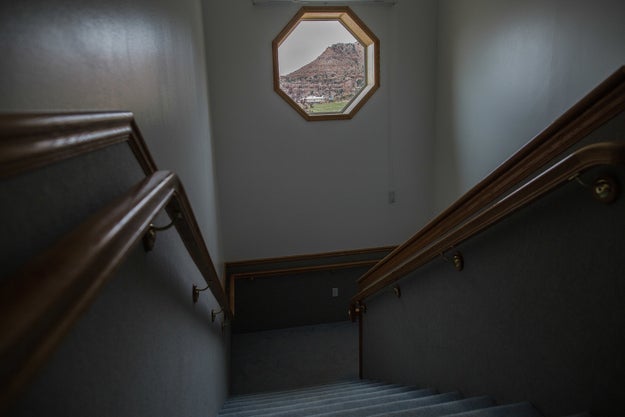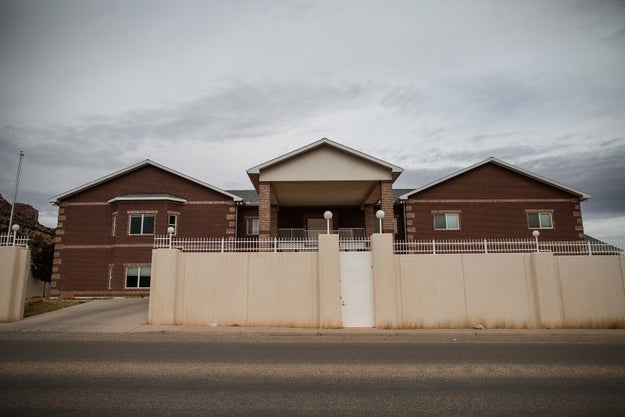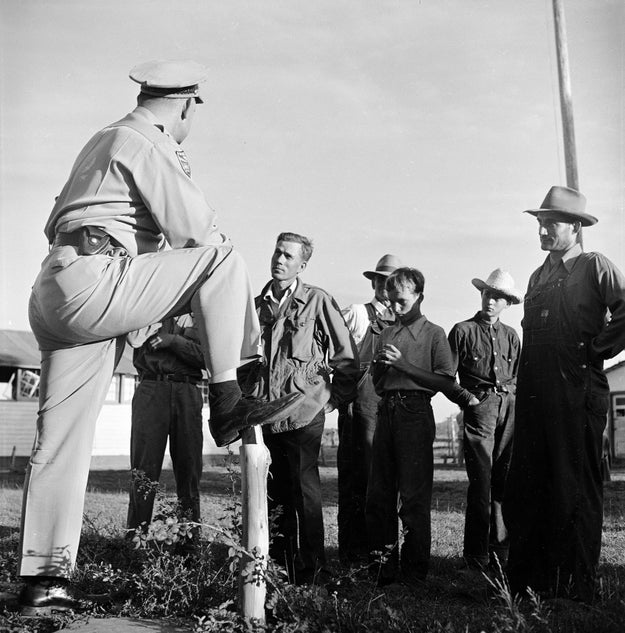How Do You Rebuild Your Life After Leaving A Polygamous Sect?
BUY quality bulk Yahoo Twitter Hotmail Google Voice Facebook Accounts
callieb89 22yo Looking for Men or Couples (man and woman) Shawnee, Kansas, United States
At 62 years old, Coylyn Pipkin is still a teenager. Women who’ve left the Fundamentalist Church of Jesus Christ of Latter-day Saints, or FLDS, often think of themselves in this way. They joke that their development, especially when it comes to emotional intelligence, stopped when they were young. When they leave the FLDS, they go through the same phases that every kid does: teenage rebellion, twenties exploration, thirties confidence. Coylyn left the FLDS in 2015, and has only recently started wearing her long gray hair without the elaborate front wave — a mix of ‘90s bangs and something vaguely 19th century — taught to all women in the church as children.
When I met Coylyn, she was dressed for the third annual Girlfriends Day Out, a celebration for ex-FLDS women hosted by the Creekers Foundation — part of a larger movement of ex-FLDS members working to wrest their narrative away from the church its members have left behind. She wasn’t wearing heels, like some of the younger women, or a tightly fitted dress. It hadn’t been that long since her wardrobe was entirely composed of the long, puffed-sleeve dresses that outsiders called “prairie” and those in the community called “polyg” (pronounced "plig”). When her husband teased her on the way out the door, mumbling, “Oh, you feminist women,” she ignored him.
For more than a decade, the FLDS ran the small borderline towns of Hildale, Utah, and Colorado City, Arizona — collectively known as Short Creek, with a population somewhere between 5,000 and 10,000 — like a totalitarian fiefdom. They owned the houses, the dairy, the farm, the grocery store. They controlled the utilities. If an outsider tried to move into town, they wouldn’t give them a business license or turn on their water. If someone was expelled from the community, they’d be shunned entirely. Any visitors were tracked by the dozens of surveillance cameras positioned around town and followed by a group of church enforcers, the “God Squad,” who’d drive around in SUVs with tinted windows.
Coylyn grew up with three mothers: her biological mother, plus two other women, or “sister wives,” who were married to her father. Coylyn’s own mother had 13 children; Mother Charlotte, as Coylyn calls her, had 16; Mother Elaine had 15: 44 in all. When Coylyn was a teenager, she and three of her sisters were married to a man named Don Pipkin. When he passed away in 2002, Warren Jeffs, then the “prophet” and leader of the FLDS, married them all to another man. When that man was kicked out of the FLDS, as so many who directly or indirectly challenged Jeffs’s authority were, Coylyn left the church to be with him.
Leaving is traumatic in many ways — including realizing that you never really chose, or maybe never even loved, the person the prophet paired you with.
“People wouldn’t look at me or acknowledge me,” she told me. “They’d walk the other way — people I’ve been friends with my whole life.” She has two biological children, but also considers her sisters’ 31 children, most of whom have left the FLDS, her own. “I’m their mother,” she told me. “I’m the one they come to, because all their mothers are still in.”
Coylyn’s story is typical of ex-FLDS women in many ways, but she’s an outlier among those who have left the church, simply because she’s still with her husband. Leaving is traumatic in many ways — including realizing that you never really chose, or maybe never even loved, the person the prophet paired you with. (In the FLDS, only the prophet can sanction a marriage.)
Leona Bateman started the Creekers, then called the Girlfriend Club, in 2013. She estimates that 90% of the women who leave the FLDS community see their marriages disintegrate. At one point, Coylyn’s daughter opened up a dating app to show me just how few options for relationships there were in the area — especially if you were looking for someone you could be certain you weren’t related to. Most people in the Crick, as FLDS members call it, descend from the same founding families.
“We don’t have family trees,” she said, laughing. “It’s more like family wreaths.”
The FLDS broke away from the Latter-day Saints (better known as Mormons) after the church abandoned the practice of polygamy in 1890. They believe Mormons have forsaken the foundational teachings of their religion, and consider them, along with anyone else who is not part of the FLDS, to be “gentiles.” The original leaders chose Short Creek for its remoteness: Zion National Park is to the north, the Grand Canyon is to the south, and miles of vacant desert lie between.

Warren Jeffs (left) and his defense attorney Richard Wright during Jeffs's trial Sept. 18, 2007, in St. George, Utah.
Pool / Getty Images
When Warren Jeffs came to power in 2002, everything that had made Short Creek feel alive was gradually taken away. Dogs, books, basketball. School. The Fourth of July. Friends and parents and siblings, especially men, were sent away to “repent” so that Jeffs and those in his inner circle could take their wives as their own. Teen girls were married off to men many decades their senior; some were taken to Jeffs and abused. Teenage boys were excommunicated for watching movies or talking to girls and disavowed by their families. Slowly, word of the inner doings of the super-insulated FLDS began to reach the outside world, largely through stories — including Jon Krakauer's book Under the Banner of Heaven, Sam Brower’s Prophet’s Prey, and Carolyn Jessop’s Escape — that alternated between being infuriating and horrifying.
“At first, the narrative had to be dark,” says Elissa Wall, whose own book, Stolen Innocence, details her teenage marriage, abuse, and eventual escape from the FLDS. “It needed to uncover and dig out that grossness that was going on. We allowed all that nastiness to come to the surface, and we’ve been successful in shining a light on all that was going on.” Now, however, that narrative is changing. “We are more than Warren Jeffs and the FLDS and where we were,” Wall told me. “We are better than the stories about us. We have a new narrative: resilience.”

The bluffs are seen through the window from America's Most Wanted Bed and Breakfast.
Kirsten Leah Bitzer / BuzzFeed News
On Airbnb, you can scroll through the photos of the rentable room in the compound that hosted Girlfriends Day Out. Today, it’s known as America’s Most Wanted Bed and Breakfast — a deliberate mockery of Warren Jeffs’s time on the FBI’s Most Wanted list. There’s a queen bed with elaborate pillow landscaping, a leather couch, and an expansive bathroom with twin vanities, one on each side of the bathroom wall. The unnervingly thick baby blue carpet goes halfway up the walls.
Some things, though, you can’t see in the photos: the walls, almost a foot thick, that block out all sound; the door that leads into a study, which in turn leads to a recording studio, which looks, through a one-way window, onto a living space, with stairs that lead down to the back of the house. The room was intended to be Warren Jeffs’s, and the suite his private lair, which would offer a way for girls, dropped off by their parents in hopes of being selected as Jeffs’s next wife, to enter the house without notice.
The 10-foot wall that surrounds the compound cost an estimated $1 million. It was the white powder used to color the concrete that drove up the cost: “It was just a veil of holiness,” George Jessop, the current caretaker and a member of one of the old Short Creek families, told me. “They were trying to create such a holy space, using that white — but they used the deception of that holiness to mask horrible things.”
We were standing on a balcony on the second floor of the main compound, which, in addition to Jeffs’s master suite, has 12 bedrooms, several living spaces, and two massive kitchens. George worked pouring concrete; dozens of others dropped what they were doing to build it as fast as possible, completing it in just 90 days.

America's Most Wanted Bed and Breakfast is a former polygamist compound surrounded by a $1 million wall in Hildale, Utah.
Kirsten Leah Bitzer / BuzzFeed News
George pointed to the building next door. “That was meant for the holiest of holies,” he said, “just like in Texas, where he’d bring girls in there and rape them.”
When Jeffs was fleeing the FBI — before his 2006 Utah arrest — he’d periodically escape to the Yearning for Zion ranch in West Texas, home to over 500 of the FLDS faithful. A 2008 FBI raid of the ranch revealed documents and recordings that implicated Jeffs in the sexual assault of minors, including a 12-year-old girl he’d taken as a wife.
When Jeffs was convicted, the Hildale compound passed out of the control of the church. Today, it mainly serves as a place to stay for overflow tourists of Zion National Park, whose reviews on Airbnb communicate various amounts of knowledge about the FLDS, the area, and why it feels the specific and peculiar way it does.
Like the Fourth of July celebration that George and his wife Miriam have helped restart, America’s Most Wanted Bed and Breakfast is part of the next chapter of Short Creek. But to understand the chapters that came before — how Jeffs leveraged and continues to leverage his power over his thousands of followers — you have to take a drive.
“They were trying to create such a holy space, using that white — but they used the deception of that holiness to mask horrible things.”
I hopped in George’s red Suburban — very few vehicles in Short Creek seat fewer than seven — and we headed into “town,” an approximately five-block journey. Within seconds, he announced we’d crossed the Utah state line, over Uzona Avenue into Arizona. The proximity to the border is no accident: For a group persecuted for decades for their polygamous lifestyle, it provides a useful blurring of jurisdiction.
There’s something about the area around Short Creek, and its shadowed position below the red cliffs, that makes it feel like you’re hiding in a corner. Around two-thirds of the roads are paved, but others peter off into dirt or gravel. Even though many FLDS members have moved out of town, vestiges remain: in the baby cemetery; in the field filled with appliances, dropped off to be fixed by an FLDS repairman who’s long gone; or, most vividly, in the occasional sightings of FLDS children, immediately recognizable in their jewel-toned prairie dresses or work shirts buttoned all the way up. Their heads bob above the fence line while they bounce on a hidden trampoline, or pump water from a cistern up in the hills, or ride a pair of Shetland ponies down the side of a Hildale street.
The ex-members I spoke with believe that most of the hundreds of leftover FLDS devotees in town are, as they put it, “coming around.”
The current leadership of the FLDS is in prison or has fled — most think to South Dakota, or maybe Colorado or Texas or Canada or Mexico — along with the vast majority of Jeffs’s wives and members “in high standing.” Those still in Short Creek abide by the ever-evolving revelations (that they must eat a gluten-free diet, for example, which is why so many of the current FLDS are so skinny; or that they cannot even touch billing notices — let alone heed them — requiring them to pay nominal rent on the houses owned by the trust now controlled by ex-FLDS. As a result, most were evicted).
The Short Creek of today is unrecognizable to many who grew up there. During the 1970s and ‘80s, life was removed from and considerably less modern than the rest of the United States. Ex-FLDS describe it as deeply, wonderfully fun. The town was a de facto playground, with a sprawling zoo filled with exotic animals and an elaborate park, complete with a functioning mini train at its center. The prophet at the time, Uncle Roy — all leaders are referred to as “Uncle” — is remembered as kind and benevolent.
Back then, women married young, but rarely as teens. You could read (most) books and watch (some) movies. You could go to school. You could pick your own clothes, so long as they were modest. The community would come together to build a house in a day: pouring the foundation the night before, then working together to make it livable by nightfall. Every month, there’d be a play, operetta, or concert put on by members of the community. There were elaborate celebrations on Uncle Roy’s birthday and on Pioneer Day — a sort of Mormon independence day. Today, many ex-FLDS are deeply nostalgic for that period in the community’s past: before the internet, before it all went wrong. Before Warren Jeffs.
In the 1980s, a schism in the FLDS priesthood council — which advises and enacts the will of the prophet — led to the expulsion of several men, along with their families. The expelled men moved a short distance out of town, to an area now known as Centennial Park, and started their own splinter sect, unaffiliated with Jeffs, which flourishes today. The group, which numbers in the thousands, practices polygamy but, as one ex-FLDS member told me, “aren’t as into the teen girl thing.”
“You see all those fancy houses?” George asked me, driving slowly down a street in Centennial Park lined with brick McMansions. “They’re built on land that wasn’t owned by the church, which meant they could take out mortgages. And when you take a mortgage, you can get enough money to actually build your house all at once.”
They’re a stark contrast to most houses in Short Creek, whose primary aesthetic could be described as “Frankensteined”: Houses were built piecemeal as money sporadically became available for new additions; entire sections often remained unfinished or covered only in particle board; other wings were added as families expanded. Building a house, according to George, often took years, if not a decade. Some FLDS houses are discernable by “Zion” signs; all are surrounded by thick walls, constructed, under Jeffs’s instruction, to ensure outsiders couldn’t see in.
While the towns of Colorado City and Hildale maintained local governments — they had to, in order to get streets paved — the church and United Effort Plan, a trust formed to shelter all church land, actually ran the towns and owned the handful of businesses, including the grocery store. They controlled the utilities and the police department. They didn’t control the public school, but the vast majority of teachers employed there were FLDS.
That sort of control, under different circumstances, might be called “an intentional community.” But it was also a perfect setup for financial and ideological exploitation.

An Arizona highway patrolman talks to young Mormon men during the Short Creek Polygamy Raid in Short Creek, Arizona, July 26, 1953.
Loomis Dean / Getty Images
The history of the FLDS is rooted in a gospel-like belief in its own persecution. That belief manifests in all corners of FLDS life, including at the edge of the town park, where a small piece of jagged sandstone reads:
“WE MUST NEVER FORGET HOW THE LORD BLESSED US IN RESTORING OUR FAMILIES TAKEN IN THE ‘53 RAID”
—UNCLE RULON
The ‘53 raid ended in the arrest of all but six members of the then–400-member polygamist community, which the Arizona governor described as “insurrectionists” intent on producing “white slavery.” At least 100 members of the press observed as hundreds of children were separated from their parents, sparking an unlikely public backlash.
The community survived, as most, but not all, of the children were returned to their parents. But the raid became a pivotal chapter in the FLDS’s understanding of themselves as a persecuted people. When the state of Utah convicted Jeffs in 2007 on two counts of acting as an accomplice to rape — only to have the ruling overturned on appeal three years later — it would feed into that same understanding. When FBI members attempted to tell FLDS members about Jeffs’s misdeeds, they refused to believe him. “All of it was framed to us as persecution,” George told me. “It locks people up tighter than hell, in terms of ever being able to break out. Even when Texas prosecuted him for stuff he really was doing, to us, it was all still persecution.”
“All of it was framed to us as persecution,” George told me. “It locks people up tighter than hell, in terms of ever being able to break out."
more on Geo altComsix56 41yo Trenton, Michigan, United States
WetNReadyMilf 43yo San Jose, California, United States
Комментариев нет:
Отправить комментарий